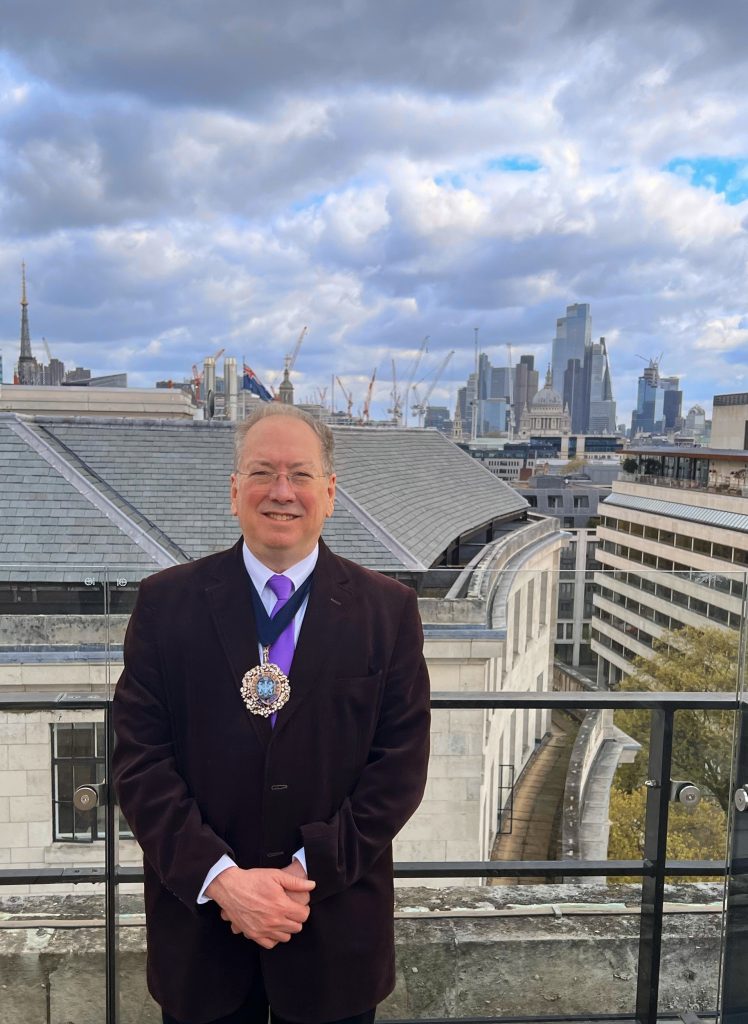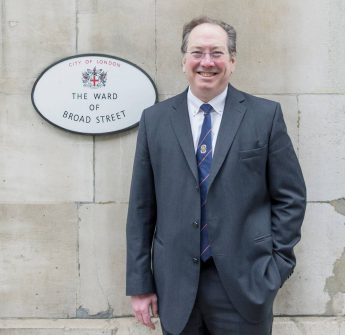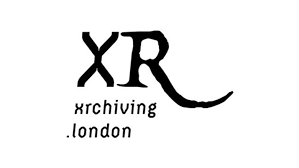Remarks to: XRchiving, Bush House, King’s College London, Saturday, 20 April 2024, by
The Rt Hon The Lord Mayor of London Alderman Professor Michael Mainelli
“History Refined By Technology: Connecting To Prosper In The World’s Coffee House.”
Ladies and Gentlemen, good morning.
It is my pleasure to join you for the XRchiving Conference. Thank you to our freshest, youngest freeman of the City of London Dr Geoff Browell and the team at King’s College London for bringing us together today.
As the 695th Lord Mayor of the City of London, I spend a lot of time walking my “beat” around the Square Mile…or, as I like to think of it, the world’s oldest democratic workers’ and residents’ cooperative. In fact, it was 3,300 steps from home at Mansion House to here this morning. Each trip through our City is a study in psychogeography.
“On Saturday evenings I have had the custom, after taking my opium, of wandering quite far, without worrying about the route or the distance in search of an occult Northwest Passage, allowing one to cross London unhampered”.
Not my words friends (don’t worry!), but those of Thomas De Quincey (1785 – 1859) in his powerful autobiographical study, Confessions Of An English Opium Eater (1821). And anyone who reads them cannot then cross London without being under their influence.
While Paris exists as the home and birthplace of the term ‘psychogeography’ – “the study of the specific effects of the geographical environment on the emotions and behaviour of individuals” (Guy Debord) – London has long been inhabited by what are predominantly psychogeographic ideas.
Psychogeography is the intersection of psychology and geography. It focuses on our psychological experiences of the city, and reveals or illuminates forgotten, discarded, or marginalised aspects of the urban environment.
It is the school of thought of the urban wanderer…the city dweller or visitor wishing to derive some meaning from and understanding of their environment and experience familiar surroundings in novel ways. As William Blake (1757–1827) wrote in his poem, “London”:
“I wander thro’ each charter’d street,
Near where the charter’d Thames does flow.
And mark in every face I meet
Marks of weakness, marks of woe…”
That brings me neatly on to the topic of my address today: “History refined by technology: Connecting to Prosper in the World’s Coffee House.” Today, I want to talk about how we can use new technology to allow people to relate to the City of London in new and exciting ways and make our past, present and future more accessible to the Square Mile’s visitors, residents and workers, working towards the aims of the City of London Corporation’s “Destination City” programme, which seeks to make the Square Mile a leading leisure destination.
Before I do so, let me backtrack a little.
I’m a scientist, economist and accountant by trade, and one of the highlights of my career has been developing a complete 1:1,00,000 digital map of the world for use in petroleum mapping in 1983, while directing the Geodat cartography project.
Firstly, what is the City? At nearly 14 centuries of age, we are the world’s oldest, continuous, democratic workers’ and residents’ cooperative, holding elections since the middle of the 7th century. Uniquely, workers’ originally had the vote, and still do. We have 615,000 workers, some 8,000 residents, 24,000 businesses, speaking over 300 languages.
The City is, rightly, known for the strength of its financial and professional services. But there are many more different areas of expertise – or “Knowledge Miles” – within our Square Mile that we need to nurture and promote.
We are surrounded by 40 learned societies, 70 universities, 130 research institutes, and 24,000 businesses, including huge global firms and cutting-edge start-ups. We’re about a third financial services, a third science, engineering, and technology, and a third art, media, culture and other services such as maritime.
Secondly, a little about my mayoral theme, “Connect To Prosper”.
From the 15th century New Learning…to 16th century Gresham College…to 17th century Royal Society… to today, our City is a timeless home of global innovation.
My mayoral theme, “Connect To Prosper”, celebrates the various “Knowledge Miles” – of our Square Mile, the “world’s coffee house”. I call the Square Mile “the world’s coffee house” because the City of London is a lively, thriving city where all comers are welcome, and commerce and culture sit side by side.
The coffee house culture of the 17th and 18th centuries spawned Jonathan’s Coffee House (1680), which grew into the London Stock Exchange…Lloyd’s Coffee House (1686), Lloyd’s of London…and the Virginia & Baltick Coffee House (1744), the Baltic Exchange.
That’s psychogeography – always under the influence of the past.
“Connect To Prosper” seeks to revitalise that coffee house culture of thought leadership and debate…examining how – through the power of connections – we can use our “Knowledge Miles” to tackle global challenges from mental health to climate change.
“Connect To Prosper” initiatives include:
The Space Protection Initiative, using space debris retrieval insurance bonds. The Smart Economy Networks Initiative, using international X-Road standards. The Constructing Science Initiative, for life science laboratories. The Green Finance Initiative, reinforcing carbon markets. GALENOS, to accelerate global mental health research.
And, finally, something that may be of particular interest to you as XRchiving will go through a huge AI phase:
The 695th Lord Mayor’s Ethical AI Initiative…
…which builds on standards on terminology, ethics and AI-related risk management set by the International Organisation for Standardisation and already has more than 4,000 participants from 300 organisations across 45 countries.
Next month, we will bring 25 countries together in Brussels to sign the “Walbrook AI Accord”: a collective agreement to develop principles for the adoption, deployment and market assurance of AI technologies, emphasising the application of ISO420001.
What does “Connect To Prosper” have to do with XR, and vice versa?
Well, extended, virtual, augmented and mixed reality technology, or XR, brings together many of the City’s “Knowledge Miles”, or areas of expertise, and – coincidentally – it’s a vital tool to help us learn about the many other miles, too.
The UK’s augmented and virtual reality sector is recognised as a pioneer, with the fastest growing market in Europe. According to Government estimates, growth is predicted to reach £62.5 billion by 2030.
As well as allowing consumers to experience live events from the comfort of their own homes and giving medical students hands-on practice on virtual patients, XR can improve the archiving experience, and enhance our public realm, illuminating the stories of the people and organisations who’ve helped position the City as a world leader in commerce, science and more over the centuries, and allowing people to connect with the City and feel a greater sense of place which could, in turn, create stronger communities.
One fascinating example of XR is the “London Medieval Murder Map” from the University of Cambridge’s Violence Research Centre. Through the map, we learn of a monk who beat his fellow brother to death at the order’s headquarters on Cheapside, after accusing him of embezzling the chapel’s rents and properties, and the gardener who was stabbed trying to prevent a priest from stealing apples from the garden of his employer, a former Alderman, in Cripplegate Without.
From the Medieval Murder Map…to Charles Booth’s poverty map that you’ll all be familiar with…to the maps and charts used by law enforcement today: they tell a story of a City ruled by ideas like honour, propriety and community, but with a good deal of passion and lawlessness to boot.
That’s psychogeography – always under the influence of the past.
Show of hands – how many people here have visited the London Mithraeum on Walbrook, next to my temporary home, Mansion House?
It really is worth a trip. And, once you’ve visited, I dare you to walk down Walbrook without imagining you are walking in the footsteps the men and women of Roman Londinium who would have worshiped there.
Because purposeful walking has an agenda, we do not adequately absorb certain aspects of the urban world. So psychogeographers idolise the flâneur, a figure conceived in 19th-century France by Charles Baudelaire who drifts about the streets with no clear purpose other than to wander.
He’s a stroller. A saunterer. A connoisseur of the street.
Flânerie has since gone out of fashion. In his 2013 article in the Paris Review, “In Praise of the Flâneur”, Bijan Stephen poses the following question:
“As we grow inexorably busier – due in large part to the influence of technology – might flânerie be due for a revival?”
I suggest that flânerie and technology need not be seen as opposing forces. XR can bring them in concert with one another. In that spirit – as part of “Connect To Prosper” we’ve launched VeraCity, a free-to-access “Pathfinder” information and navigation portal for the City of London, supporting visitors, residents and workers looking to indulge in a little flânerie.
It’s part of a movement towards a ‘slower/better’ approach that sits in direct contrast to the “faster/cheaper” mindset that dominates so much of our lives, exemplified by the Slow Food movement, or the Long Now that inspired my firm’s Long Finance initiative.
Elsewhere, the City of London Corporation’s public-facing maps, Compass and Interactive Web Maps, provide easy access to a huge amount of interesting spatial data. We’ll further digitise the planning system thanks to grants from two prestigious Government funding schemes (the Digital Planning Improvement Fund and the PropTech Innovation Fund). And the Corporation is creating a Guildhall in 3D project as part of Twin-it! – a pan-European initiative to scan key buildings from around Europe.
Meanwhile, in November, the Worshipful Company of Information Technologists made my dream of having an augmented reality float at the Lord Mayor’s Show come true, taking a 700-year-long tradition into a new dimension.
As always with developing technologies, we need to consider the ethical implications of XR, as well as the importance of establishing and maintaining internationally recognised principles, which will be discussed in further depth in today’s workshop on the London Charter.
Nurturing our Knowledge Miles is so important if we’re to unlock the true potential of XR – for the public realm and also as an economic opportunity – and will, I’m sure, emerge as a key topic throughout today’s discussions.
The world is moving from STEM to STEAM – a positive step for XRchiving. And I’m happy to say that we are highlighting the importance of STEAM subjects through our “Connect To Prosper” experiment series, which is designed to showcase the City’s inventiveness to young people and international partners alike.
If you would like to hear more about any of our strands of work, please don’t hesitate to get in touch.
We have our maps of London, indeed, including Adam Dant’s beautifully illustrated maps of everything from the Square Mile’s coffee houses to criminal London, and we have our fantastic City of London guides to help show us the way. In her 1922 novel Jacob’s Room, Virginia Woolf (1882 – 1941) writes: “The streets of London have their map; but our passions are uncharted. What are you going to meet if you turn this corner?”
XR can help us connect with our inner flâneur and see what is uncharted, allowing people to engage with London’s past, present and future…evoking new associations and connections…building stronger communities…and, ultimately, creating a more accessible, absorbing and appealing City for all.
So, today? Hopefully, we will all in turn meet something new as we turn around new corners.
Thank you.


